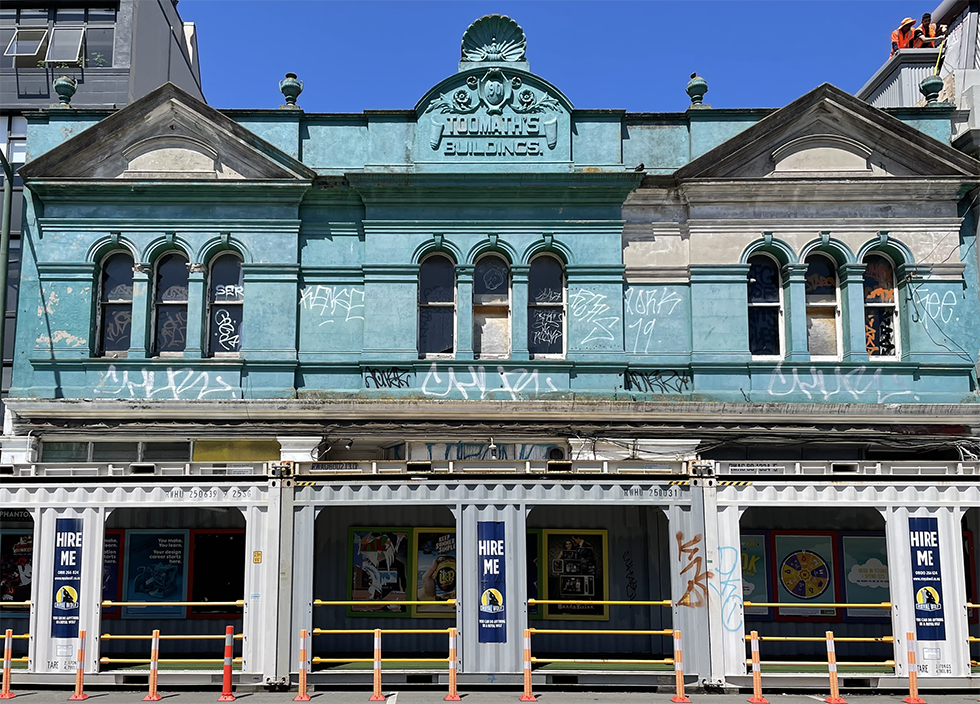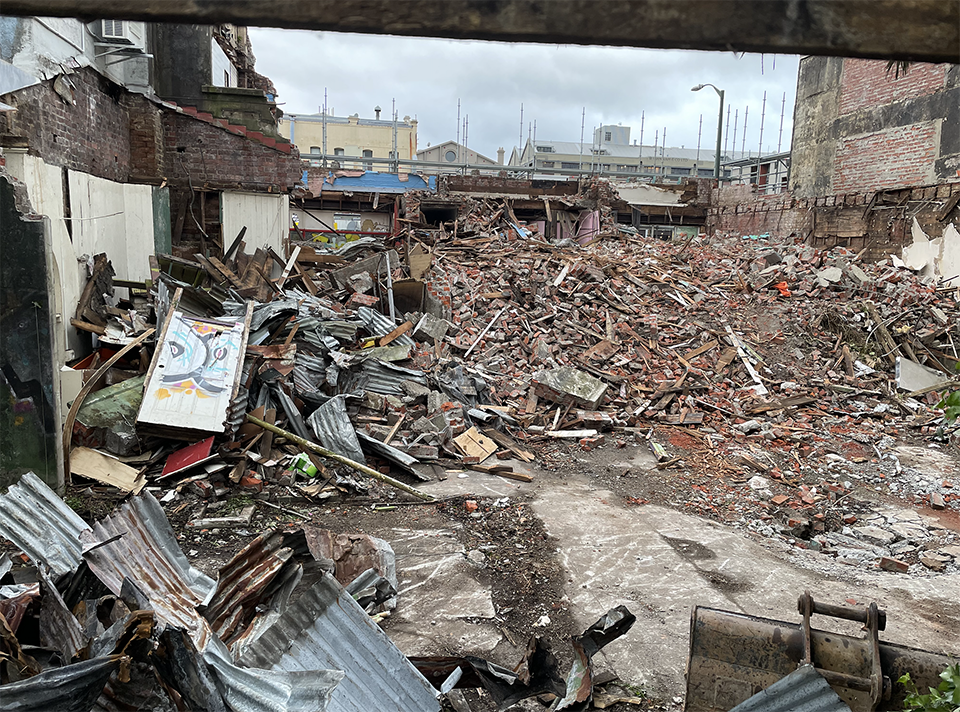Derelict on Main Street: property laws, heritage, upkeep, and vibrancy
A small but important ball has started rolling: moves to allow councils to sort out buildings in their centres whose neglect is bringing the vibe down. But instead of plodding along, NZ could jump to some good practice that’s already live…
We all know the thing: a main street which should be a bustling, buzzing place people want to be – but a major building is empty and looks sad, dilapidated, uncared for. While it might only be one property, its sadness colours the whole street and is a buzzkill that affects all the other activities on the street. It might also be dangerous, damaged, set fire to. It might be all these things, and also have had a grand and dignified history, been a hub of civic live or vibrancy.

That definitely sharpens the sadness of its current decrepitude, but it doesn’t leaven its depressing effect on the street’s vibe.
But the paramountcy of private property rights in this country – plus a longstanding failure of our establishment to understand what makes main streets vibrant and nice to be (no, it’s actually not plentiful carparking) – means that if your town is in this situation, you’ll need to be really lucky.
Luck is the owner of that building having the energy, and the spare cash (typically way more than you think – especially right now), and the time, and the permission, and the inclination to do something about this particular building in their portfolio. That’s a lot of planets to align.
And often – especially given many such property owners own plenty of buildings in towns where they rarely spend much time – you’re lucked out.
There are lots of understandable reasons a property owner would be content to let a mouldering building keep mouldering away, mostly due to cost. There’s the extra “do something” costs imposed by earthquake-strengthening and/or heritage rules; the challenge of finding tenants promptly, once you’ve dropped the millions into the do-up; the rates not being a big enough drain on the portfolio to motivate action…
But complaints can come thick and fast, and so can evidence of the building’s buzzkill effect on the neighbourhing public realm, and you still need that luck – the Sharon of the situation needs to decide (after perhaps decades) that it suits them to sell, or do up.
Where things get bad, councils can choose to raise rates to try and motivate action, though there are limits on this. When things get actually dangerous (by which time a building has had a Dementor-like effect on the whole street), some public safety triggers kick in and council can move to acquire the “asset” (which, by this time, will cost the public lots in demolition and possibly remediation).
Reasons to be cheerful about our dero buildings
But Scotland, and more recently England, have a really great-sounding setup.
The scheme, initiated originally by the Scottish Land Council, had some kinks that needed ironing out (like anything). But the core of the scheme is quite simple: in essence, a local council can force the sale of a town centre property that’s derelict or abandoned by its owner. So far, so basic. But the powerful bit: where there’s an appropriate public-good town-centre organisation, that community organisation has a right to buy the property, to develop and operate it in the public good. Crucially, for those (specifically approved and vetted organisations) it’s not just a right of first refusal, it’s a right to buy – which unlocks all sorts of goodness.
Have a listen to “When they go low, we go High (Street)” for more on how this works in real towns in the UK (and here in Scotland itself), enabling all sorts of excellent stuff including community-owned businesses and cooperatives (which – sidebar – are weirdly uncommon here, given the goodness they provide).

In New Zealand, the first tentative steps in vaguely that direction are being taken – various councils supporting a remit for Local Government NZ to advocate to government for a legislative change that would allow compulsory acquisition earlier than current laws allow.
Come on though New Zealand… our towns need us to pull all the levers and turn all the dials up to revitalise and invigorate them. More people will be coming to live in our centres, so the stakes are higher for centres to be wholly awesome places that serve their local communities with both hands.
When a derelict or neglected building is sucking the life out of an important town centre street, odds are the town needs more than the most basic intervention, which puts the local council in charge of developing a piece of land. An LGNZ remit is but the first step on a long winding road, to that very basic intervention.
So why don’t we jump straight to the good practice as per Scotland, and riff on that instead?
How could we do that really well, with our unique advantages (like iwi land ownership)?
Image credits:
- Toomaths building (pre fire and post demolition): Eye of the Fish
- Banner image (Bluff town centre): OneNews
Leave a comment